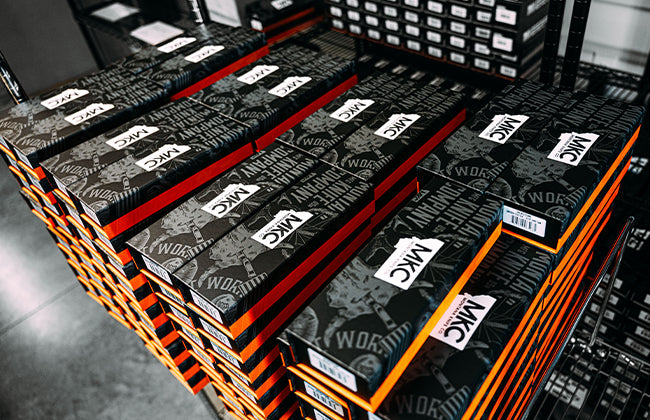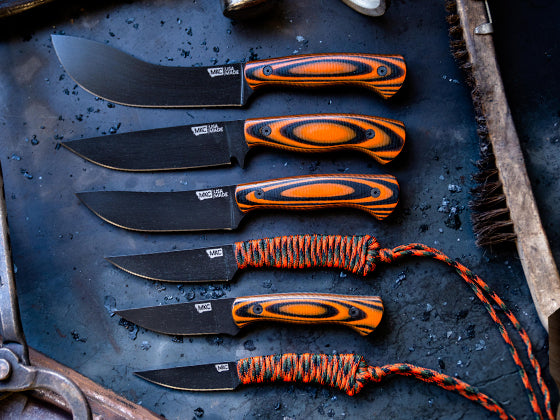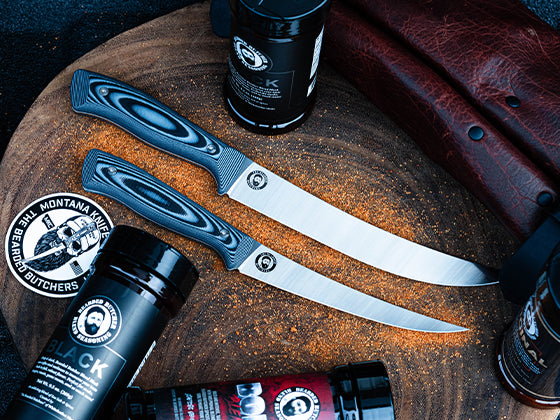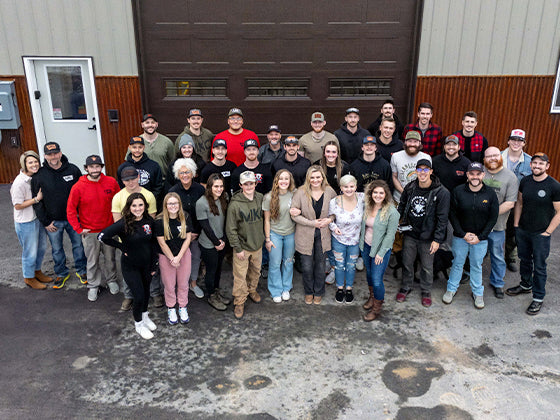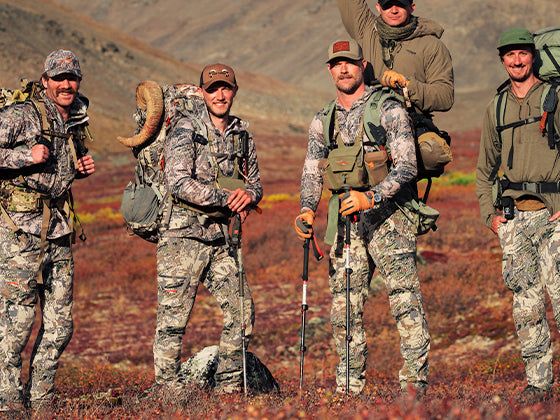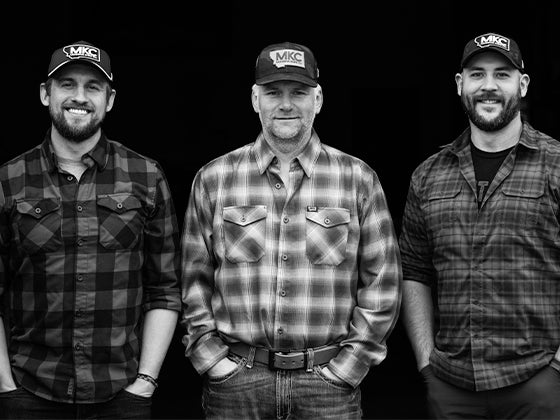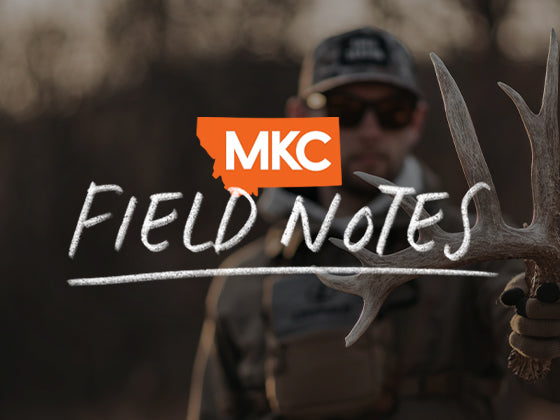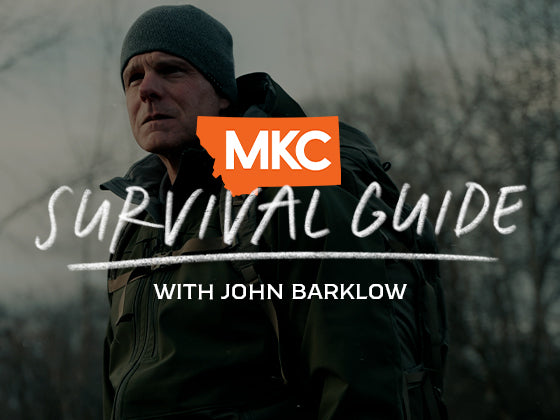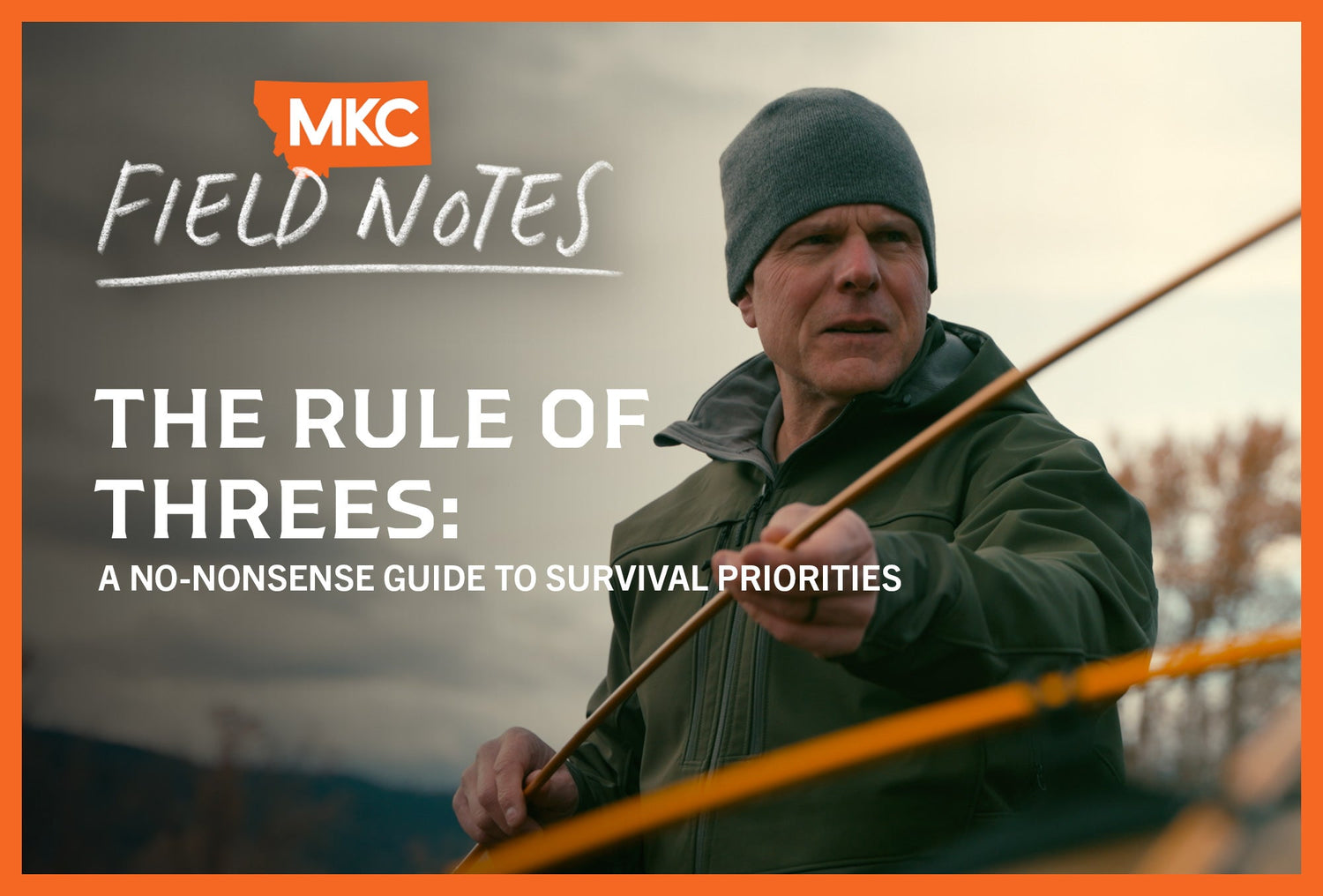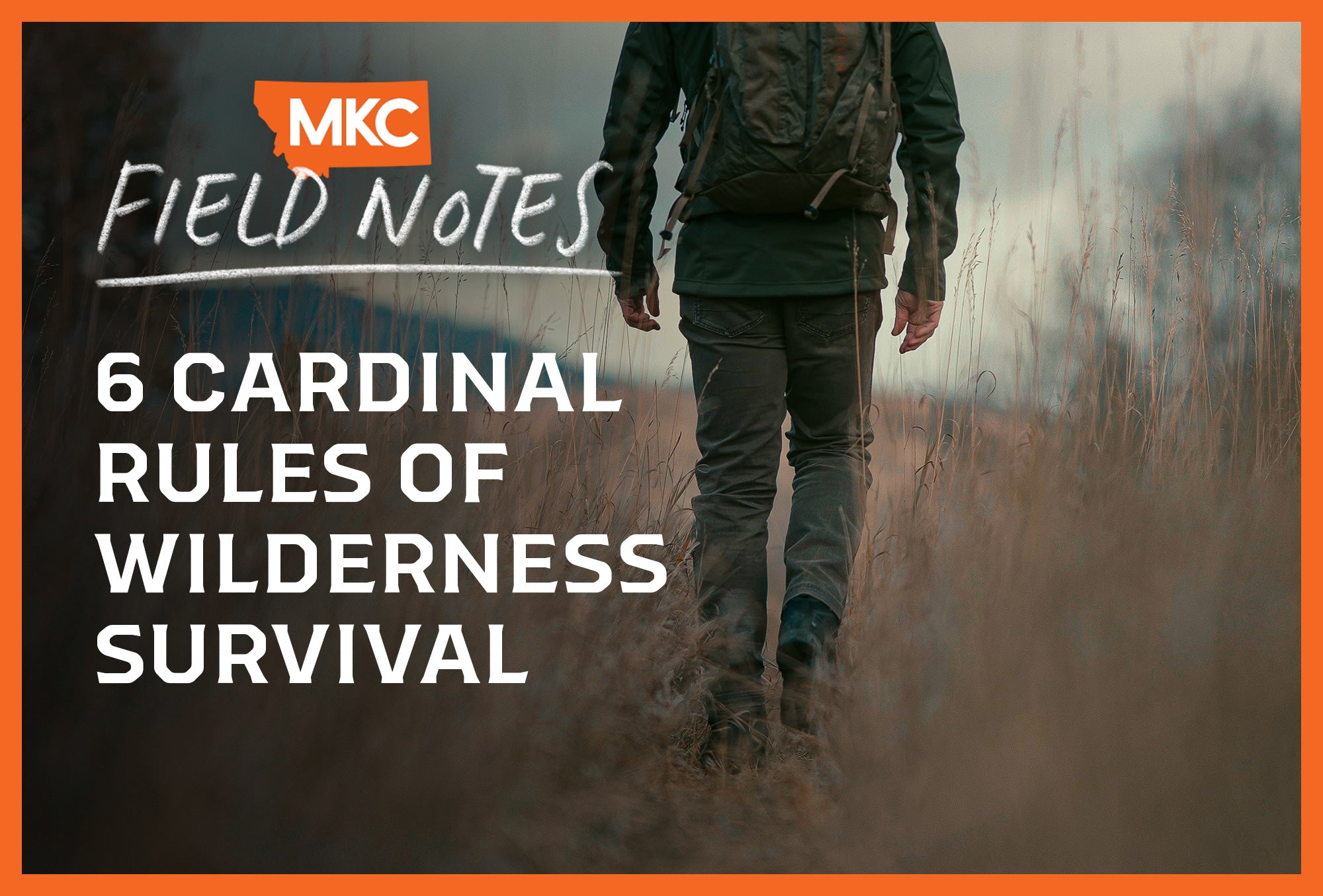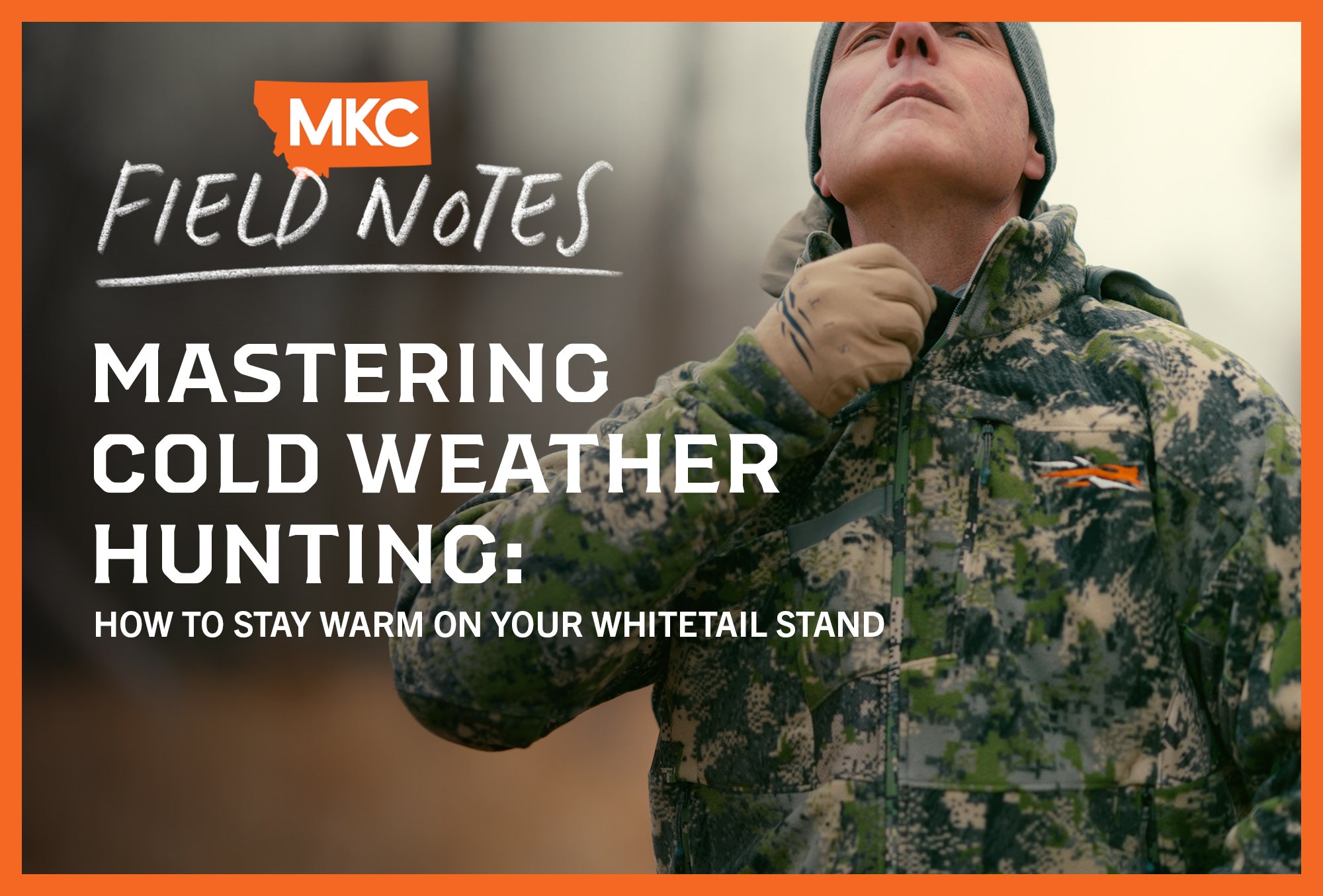In the backcountry, knowing your survival priorities can keep a small problem from turning into a life-or-death situation.
I’ve seen it all, from coastal Alaska’s brutally wet conditions to surprise snowstorms during August mule deer hunts in Colorado, and I’ve learned that survival comes down to your preparation before a trip.
It’s imperative to understand and train for your survival priorities. It’s simple: You can survive three hours without shelter, three days without water, and three weeks without food.
Follow these basic rules to make smart choices when your hunt spirals out of control.

Shelter Starts With What You’re Wearing
Picture this: You’re stuck above the timberline with a heavy pack when a storm rolls in.
In such moments, you need to know exactly what to do first: Start with the clothes on your back.
Technical clothing is your first line of defense against bad weather. That’s why I consider rain gear as part of my survival system. When that August snow hits or an unexpected storm rolls in, having the right clothing ready to go can keep a tough situation from becoming dangerous.
Building Better Shelter
Once you’ve got your clothing sorted out, it’s time to think about your next layer of protection. This might mean heading below the tree line, getting behind a big boulder, or setting up your tent or tarp.
To create shelter, here’s what you need at minimum:
- A good knife that’ll handle shelter-building tasks
- 550 paracord to tie everything together
- A tarp or tent, depending on what you’re doing
- The knowledge to build basic shelters like lean-tos and A-frames
Most people get into trouble in the wilderness because they get cold and wet. Once that happens, they start to panic. They might quit their hunt early, hit the SOS button, or make other choices they wouldn’t make if they were warm and dry.
That’s why getting shelter right is so important — it keeps your head clear and helps you make better decisions.
Water: Getting It Right Matters
After shelter, follow your survival priorities and focus on water.
When you’re hydrated, your mind works better, and if you’re up high, good hydration prevents altitude problems. But finding water isn’t enough. You need to find clean water.
Drinking straight from streams, ponds, or wallows because you’re thirsty and desperate may cause diarrhea, which will dehydrate you faster than having no water at all. Getting sick from bad water can turn a temporary problem into a real emergency.
Staying Smart About Water
When it comes to water in the backcountry, you need to plan ahead.
Carry something to filter or purify your water with, like chlorine dioxide tablets or a good filter. If you’re moving around and have clean water with you, try to make it last until you can find and treat more from a reliable source.
Food: Important but Not Urgent
The rule of threes puts food last for a reason.
Sure, your stomach might be telling you it’s an emergency, but your body can go a while without food. This lets you focus on the things that matter, like seeking shelter and finding clean water.
That said, don’t pass up easy food opportunities. If you spot some blueberries or run into a grouse, take advantage. Just remember that finding food shouldn’t distract you from your more important survival priorities.
The Truth About Fire
Here’s something that might surprise you: Fire isn’t one of the top three survival priorities.
A lot of people think it is, but that usually comes from a lack of experience. Fire is a luxury in the backcountry and not something you should solely rely on to save your life.
Let me tell you about my first time trying to build a fire in coastal Alaska. I was so sure I could get it going, but three hours later, all I had was smoke and frustration. I only got heat from working so hard to start the fire.
That taught me a valuable lesson: In wet conditions, you might spend more energy trying to make fire than you’ll ever get back from it.
Putting It All Together
Make sure you and your partners are aligned on your survival priorities, and train to its rule of threes before you need it.
Run through some scenarios while you’re training with your hunting buddies or hiking partners. Can everyone get their rain gear on quickly when the weather hits? Does everyone know how to procure clean water? Have you practiced setting up your quick shelters quickly and in poor weather?
You don’t need to know a hundred different ways to start a fire or set snares. You just need to know how to handle small problems before they become big ones. Whether you’ve twisted an ankle on a solo hunt or gotten separated from your group, knowing your survival priorities helps you stay calm and handle things until help arrives.

Making Knowledge Work for You
Understanding the rule of threes changes how you think about backcountry emergencies. When you know that shelter comes first, then water, then food, you don’t waste energy on the wrong things.
Most survival situations can be prevented and don’t require dramatic solutions. They just need you to stay calm and work through basic steps in the right order. If you understand these priorities and carry the right gear to support them, you can handle most problems.
The adage “we don’t rise to our expectation but merely fall to the level of our training” is relevant here. The rule of threes is one of the most valuable survival tools — and costs you little but time to practice.
by John Barklow, Special Operations Survival Instructor and a valued partner of MKC























